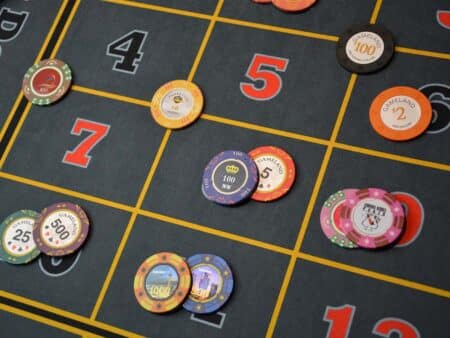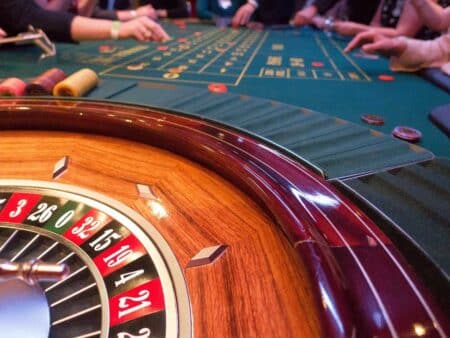What does RTP represent in casinos?
RTP, or Return to Player, is a percentage that indicates how much of the total money wagered on a casino game is expected to be paid back to players over time. For example, a game with an RTP of 96% will return $96 for every $100 wagered, on average.
How does RTP differ from house edge?
Return to Player (RTP) and house edge are two inverted terms used in the casino gaming industry. RTP shows what proportion out of all wagers will be returned to players over some period, while house edge indicates how much would be retained by the casino. For example, when a 95% Return to Player ratio is given, a House Edge of 5% exists. In other words, higher RTP corresponds with lower house advantage.
How are casino games RTPs calculated?
The calculation of Return to Player in casino games is done by dividing the sum total that was returned to players by the sum total which had been staked over a long period of time. The gameplay of millions of spins or hands guarantees calculation accuracy.
Do bonuses affect the RTP?
Some casino bonuses may have playthrough requirements that restrict how quickly you can convert bonus funds to real money. This can affect the actual Return to Player for players who are using bonuses.
Can players calculate RTP themselves?
This calculation requires access to extensive data on total payouts and total bets, which is typically not available to players. Game developers and casinos pre-calculate and display the Return to Player for each game. This ensures transparency and helps players make informed decisions about which games to play. RTP is usually verified and validated by independent organizations for honesty and accuracy.
Can the Return to Player for a game change over time?
Yes, the RTP value can sometimes change. Although the games provider usually determines the RTP, online casinos may sometimes alter it. Still, such changes are not often and also insignificant because huge alterations can affect the popularity of the game. Also, the RTP is usually an average over a long period which means that short term payouts can be significantly different from theoretical RTPs.
What are the factors that influence the RTP of a game?
The RTP (Return to Player) of a game is influenced by several critical factors, principally established through the design and rules set by the developers. These include:
Payout Structure: The distribution of high-paying and low-paying symbols with their respective payout values plays a vital role. Designers adjust these elements to achieve the desired RTP.
Probability of Winning Combinations: The odds of various winning combinations occurring influence the RTP. Games are mathematically simulated to balance how often they pay out and how much they pay.
Game Volatility: The risk level of the game is called volatility. High-volatility games have larger wins but fewer times while low-volatility games have smaller, more frequent payouts.
Special Features: Bonus rounds, wilds or free spins can influence an RTP. Low earning potential from hard-to-trigger features or those with poor pay despite being visually engaging may decrease overall RTP figures.
It is also worth mentioning the influence of visual and sound design on the player’s perception of the game:
Highlighting winning moments visually and through sound design can create the illusion of frequency, making players think that there have been many wins, even if the actual rate of return to the player is low. This psychological aspect helps keep players engaged. While attractive design elements enhance the gaming experience, they should not come at the expense of fair play and transparency.
The fixed RTP is determined through extensive mathematical modelling and testing to ensure it accurately reflects the game’s long-term payout potential.
What are the customary RTP percentages for diverse casino games?
Slots: In slots, the percentage of Return to Player (RTP) values can vary significantly from one game to another, though most of the time it lies between 90% and 98%. Some progressive jackpot slots may have lower RTPs to fund the ever-growing jackpots.
Table games in online casinos usually boast some of the highest RTPs. Here are some examples.
Blackjack: With proper strategy, Blackjack can have an RTP of 99.5% or higher.
American Roulette: In American Roulette, the Return to Player (RTP) is consistent across all types of bets due to the fixed house edge of 5.26%. This means the RTP is always 94.74%, regardless of the specific bet placed. Here’s a table summarizing this:
| Bet Type | Odds of Winning | Payout | RTP (%) |
|---|---|---|---|
| Straight-Up | 1 in 38 | 35:1 | 94.74 |
| Split | 2 in 38 | 17:1 | 94.74 |
| Street | 3 in 38 | 11:1 | 94.74 |
| Corner | 4 in 38 | 8:1 | 94.74 |
| Line | 6 in 38 | 5:1 | 94.74 |
| Column | 12 in 38 | 2:1 | 94.74 |
| Dozen | 12 in 38 | 2:1 | 94.74 |
| Red/Black | 18 in 38 | 1:1 | 94.74 |
| Odd/Even | 18 in 38 | 1:1 | 94.74 |
| High/Low | 18 in 38 | 1:1 | 94.74 |
European roulette: In European roulette, the RTP (Return to Player) remains constant at 97.3% regardless of the type of bet placed. This is because the house edge is fixed at 2.7% for all bets. However, the odds and payouts vary depending on the type of bet. Here’s a table summarizing the different bet types, their odds, and payouts:
| Bet Type | Odds of Winning | Payout | RTP (%) |
|---|---|---|---|
| Straight (Single Number) | 2.70% | 35:1 | 97.3 |
| Split (Two Numbers) | 5.41% | 17:1 | 97.3 |
| Street (Three Numbers) | 8.11% | 11:1 | 97.3 |
| Corner (Four Numbers) | 10.81% | 8:1 | 97.3 |
| Six Line (Six Numbers) | 16.22% | 5:1 | 97.3 |
| Column | 32.43% | 2:1 | 97.3 |
| Dozen | 32.43% | 2:1 | 97.3 |
| Red/Black | 48.65% | 1:1 | 97.3 |
| Even/Odd | 48.65% | 1:1 | 97.3 |
| High/Low | 48.65% | 1:1 | 97.3 |
French roulette: In French roulette, the Return to Player (RTP) is 98.65%, which is one of the highest among roulette variants. This high RTP is due to the “La Partage” and “En Prison” rules, which reduce the house edge to just 1.35%. These rules allow players to recover part or all of their bets when the ball lands on zero, making French roulette particularly favorable for players.
Baccarat: Baccarat is another table game where players have a strong advantage over the house. Depending on your exact stake, baccarat may pay up to 99% RTP.
Poker: For example, in video poker, it may reach as high as an average payback ratio of 99.5%. But real money poker that is played against other people such as Texas Hold’em does not have precise payout rates since it relies on player abilities mostly and the *rake collected by the house out of every pot.
Live Dealer Games: Live dealer games normally have the same RTPs as their RNG equivalents. This means that you may predict Blackjack’s RTP to fall between 97% and 99.5%, Roulette’s between 94% and 98% and Baccarat might be anywhere from 98.5% to 99%, depending on the game type and stakes.
Bingo: The return-to-player rate for Bingo may range from 85-90%.
Keno: Typically, Keno has an average RTP of between 80%-90%.
Scratch Cards: Scratch Cards generally offer a smaller return-to-player than many other casino games, often ranging from sixty to seventy-five per cent.
However, these are only nominal ranges. The precise RTP for every individual game is provided in the information area of that particular online gambling establishment.
What are the RTP differences between an online slot and a physical one?
Return to Player values vary from one kind of slot machine to another. These discrepancies are related to variables including operational expenses, target markets and regulatory frameworks.
Online Slots: Online slots come with higher RTPs which range around 90% – 98% mainly because of reduced overhead costs as well as the competition within this market. The availability of openness and accessibility enables players to make choices based on their rewards.
Physical Slot Machines: Physical slot machines have a lower average RTP range ranging from 85% – 95% owing to high running expenditures and varying regulatory regimes. The RTP is not uniform between locations. Regions that have large populations or attract visitors tend to have low RTP numbers.
How can players find the Return to Player of a slot machine?
There are several sources where you can find the Return to Player of a slot machine.
Casino Website or App: Online casino platforms give information on their games including the Return to Player (RTP).
Game Information Screens: During games, you will generally come across pay tables and game regulations which contain the Return to Player (RTP).
Developer’s Websites: Official websites of gaming firms commonly contain listings of the Return to Player rates for their games.
Casino Customer Support: You may acquire this information from the casino’s customer care department.
What are the regulatory requirements for RTP in various regions?
The Return to Player % is a significant regulatory feature for both online and land-based casinos. Regulatory standards differ between locations, with some mandating precise minimum percentages while others emphasize on transparency and justice without prescribing a set RTP.
United States: The Division of Gaming Enforcement (DGE) demands a minimum RTP of 83%, whereas the Pennsylvania Gaming Control Board specifies a minimum RTP of 85%.
United Kingdom: The UK Gambling Commission mandates openness and fair play.
European Union: Regulatory standards differ between member states.
Asia: The Gaming Inspection and Coordination Bureau specifies a minimum RTP of 85% for slot machines.
Each location has its own special needs, but common themes include guaranteeing security, controlling risks, and encouraging efficiency in payment systems.
How do casinos ensure the accuracy of RTP values?
There are numerous rigorous techniques by which the accuracy of RTP (Return to Player) figures is maintained by casinos:
Game Development and Testing: A game must be submitted to intensive testing before it is launched. This involves checking that the Random Number Generators (RNGs) used in a game are trustworthy and provide random results, as well as guaranteeing that the game has its claimed RTP ratios.
Specialized Labs: Independent testing laboratories like eCOGRA or GLI go over the full games. These laboratories evaluate hundreds of thousands of game spins so that over many months it becomes straightforward to discern if RTP is correct.
Regulatory Oversight: Casinos are normally controlled by gaming authorities that compel them to undergo regular audits and compliance inspections. They verify that the RTP numbers are correct and the games are fair.
Continuous Monitoring: Even after a game is published, casinos and developers regularly analyze its performance to guarantee it retains the intended RTP. Any deviations showing as a consequence of this monitoring will be explored quickly leading to their timely repair.
These procedures assist assure openness and fairness within the casino sector therefore ensuring players about the authenticity of the RTP numbers.
How to pick games based on RTP and volatility?
Balance RTP and Volatility: Look for games that provide a nice balance of high RTP and a degree of volatility that matches your play style.
Research: Many internet sites give information on the RTP and volatility of games, including ours.
Test Games: Play demo versions to get a sense of the game’s volatility and frequency of victories.
Set Limits: Decide upfront how much you’re prepared to spend and keep to that budget.
Understand Bonus Features: Some slots contain features that may dramatically affect RTP and volatility.
Take Advantage of Promotions: Use casino promos and bonuses to prolong your playtime.
Check Reviews and Forums: Other players’ experiences may give significant information.
By balancing these criteria, gamers may pick games that give greater returns and correspond with their gaming style, and risk tolerance.
Why is it so necessary to browse the RTP of the games you prefer?
The understanding of Return to Player may greatly enhance the gaming experience by giving one an opportunity to make informed choices, manage finances better, set realistic goals, increase enjoyment, make strategic plays, develop trust and transparency, engage in long-term play, responsible gambling as well as maximizing promotions and bonuses. In summary, grasping RTP turns the game from being a chance match into something more thoughtful and pleasurable.


FAQ
What does RTP stand for in a casino? RTP stands for “Return to Player.”
It is a percentage that indicates how much of the total money wagered on a casino game is expected to be paid back to players over time.
How is RTP calculated?
RTP is calculated by dividing the total amount of money returned to players by the total amount of money wagered on the game, then multiplying by 100 to get a percentage.
What is the difference between RTP and house edge?
RTP and house edge are two sides of the same coin. RTP represents the percentage of money returned to players, while the house edge represents the percentage of money the casino keeps. Together, they add up to 100%.
Does a higher RTP mean better chances of winning?
A higher RTP indicates a higher percentage of money returned to players over time, but it does not guarantee individual wins. It simply means that, on average, the game pays out more to players.
Are RTP values the same for all casino games?
No, RTP values vary between different casino games. Slot machines, table games, and other casino games each have their own RTP percentages.
Can RTP be used to predict short-term outcomes?
No, RTP is calculated over a long period and many gameplays. It does not predict short-term outcomes or guarantee specific results in individual sessions.
How can I find the RTP of a casino game?
The RTP of a casino game is usually listed in the game’s information or help section. Online casinos often display RTP percentages for their games on their websites.
Why is RTP important for players?
RTP helps players understand the potential return they can expect from a game over time. It allows them to make more informed decisions about which games to play based on their payout rates.
* Rake refers to the commission fee taken by the cardroom or casino for hosting the game. This fee is typically a small percentage of the pot in each hand, usually ranging from 2.5% to 10%, up to a predetermined maximum amount.
There are several ways rake can be collected:
Pot Rake: A percentage is taken directly from the pot during each hand.
Time Collection: A set fee is collected at regular intervals, such as every half-hour.
Dead Drop: A fixed amount is placed on the dealer button each hand and collected before any cards are dealt.
Rake is essential for the cardroom or casino to cover operational costs, including staff, equipment, and facilities.







